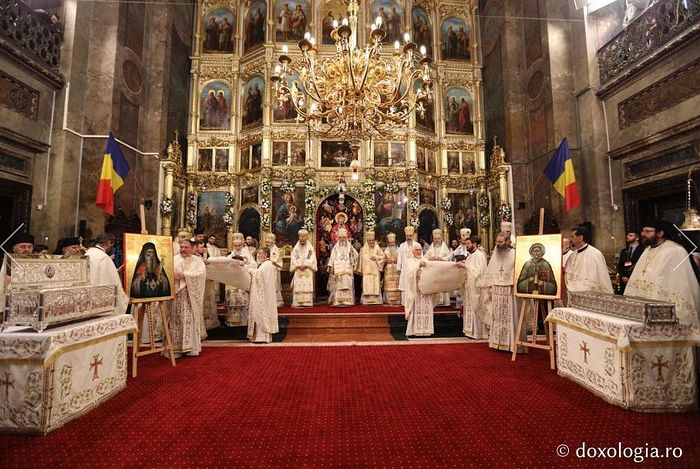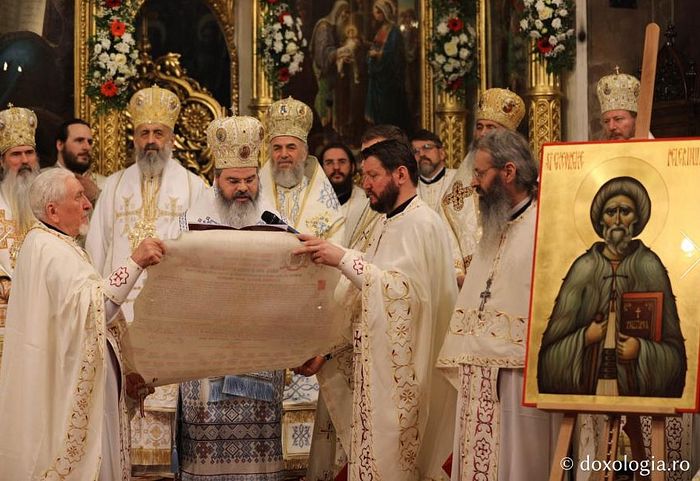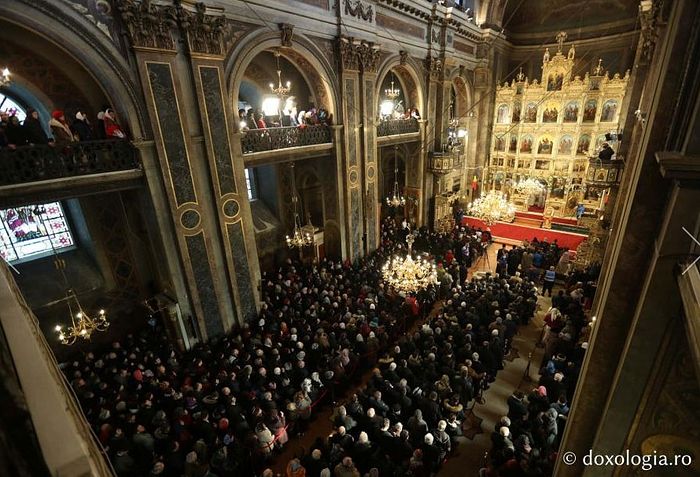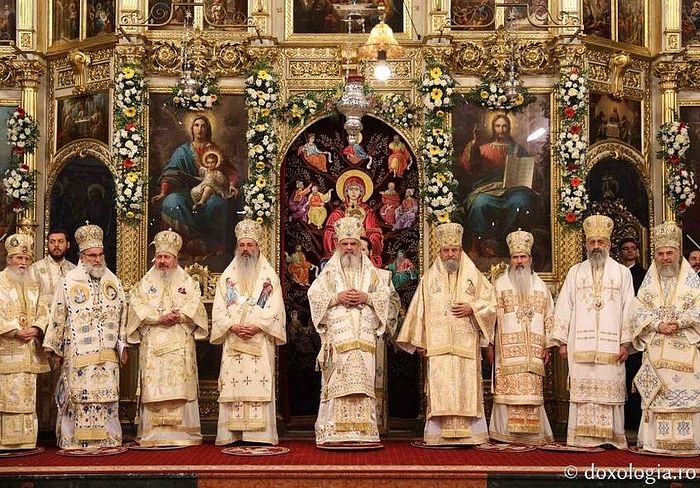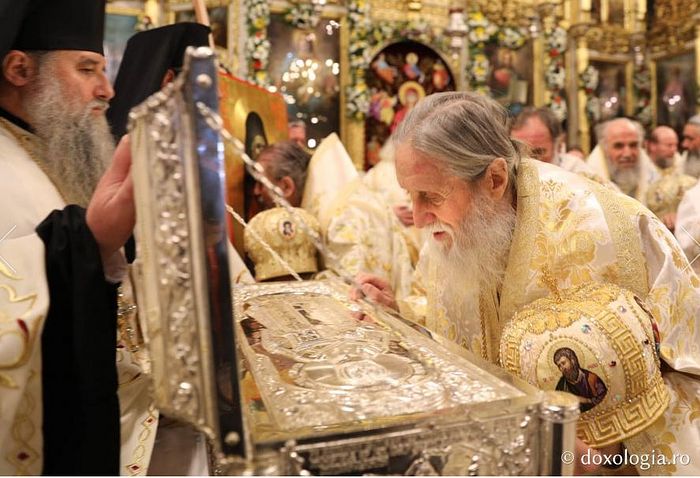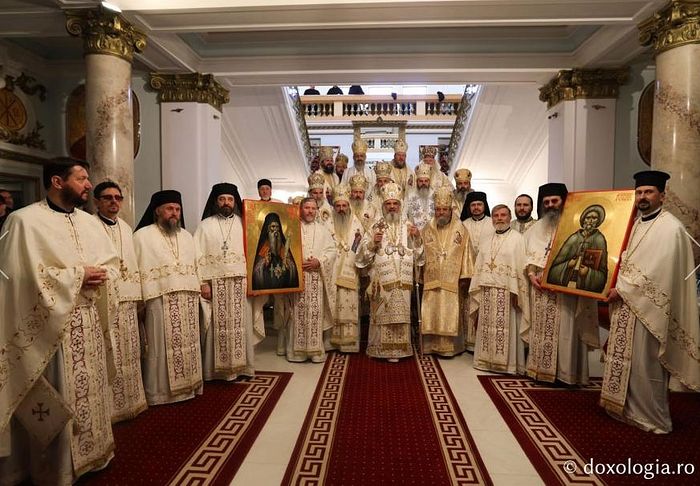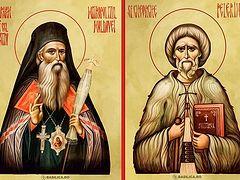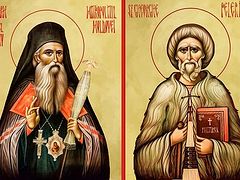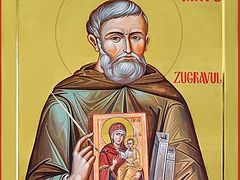Iași, Romania, March 26, 2018
His Beatitude Patriarch Daniel of Romania celebrated the liturgical glorification of two recently-canonized Romanian saints in the metropolitan cathedral of Iași yesterday. The primate was concelebrated by fourteen other Romanian hierarchs for the joyous celebration which took place on the feast of the Annunciation of the Most Holy Theotokos (as the Romanian Orthodox Church celebrates on the new calendar), reports the press service of the Romanian Orthodox Church.
Following the festal Divine Liturgy, the tomos of canonization of Holy Hierarch Joseph the Merciful, the Metropolitan of Moldova was read out, followed by the tomos of Gheorghe Lazar the Ascetic. The Holy Synod of the Romanian Orthodox Church had officially added them to the calendar of saints at their early October 2017 session, establishing St. Joseph’s feast day as January 26 (new style), and St. Gheorge’s as August 17 (new style).
The icons of the new saints were also presented, and their troparia were officially sung for the first time.
“These two saints are added to the now more than 100 ancient and modern saints in the calendar of the Romanian Orthodox Church,” Pat. Daniel noted.
He also noted the importance of their glorification taking place now, giving that the centenary of the union of Bessarabia with Romania will be celebrated tomorrow and both these saints lived in Bessarabia and other locations throughout Romania. “These two saints symbolically show the spiritual communion of the Romanians living in different provinces but united by the same faith,” Pat. Daniel reflected.
The service ended with all the gathered clergy, monastics, and thousands of faithful venerating the relics of the newly-proclaimed saints that were present in the Iași cathedral. St. Joseph’s relics will remain in Iași, while the relics of St. Gheorge will be taken to the Văratec Monastery in Neamț.
***
Metropolitan Joseph was born in 1820 into the family of the priest Ananias Mihalache, receiving the name of John at Baptism. Left fatherless at the age of 1, he was raised by his mother, Theodosia, until at the age of 10 he was entrusted to the care of a relative, Hierodeacon Theophylact of the Frumoasa Monastery in Bessarabia.
Accompanied by him, in 1831 he went to Iaşi to live in the Monastery of St. Spyridon, which was then under the leadership of the bishop Varlaam Cuza Sardeo
Joining him on this, in the year 1831 he came to Iasi, living in the Monastery ‘St. Spiridon’, which is then under the leadership of Archbishop Varlaam Cuza Sardeon. He then followed Hierodeacon Theophylact to the Monastery of the Holy Prophet Samuel in Focşani, where, on November 23, 1835 he was tonsured into monasticism by Bishop Chesarie, and the next day he was ordained a hierodeacon.
He attended the courses of the newly-established seminary in Buzău from 1836 to 1840, then those of St. Sava’s in Bucharest from 1840 to 1847. He fulfilled the obediences of the rector of Şerbăneşti-Morunglavu Monastery from 1849 to 1857, and Găiseni Monastery from 1857 to 1863, was ordained a hieromonk on August 29, 1850, and elevated to the rank of archimandrite in 1860.
For a short period (1863-1864) he was the abbot at Sărindar Monastery in Bucharest. He also worked as a professor of religion at the Gh. Lazarus School (1864-1866), the “Matei Basarab” Lyceum (1866-1873) and at the “Carol I” School (1867-1873).
On April 23, 1872, he was consecrated as a bishop, and on January 18, 1873 he was appointed bishop of Arges, where he pastored for a short time, until his election, on June 10, 1875, as metropolitan of Moldavia. He was installed in Iaşi on July 6, 1875, where he shepherded until his death on January 26, 1902.
***
Gheorghe Lazar was born in the village of Șugag, in Alba county, in 1846. He married at the age of 24 and was blessed by God with five children. He led an honest Christian life of work, prayer, fasting, and alms.
He went to worship at the Tomb of the Lord in 1884, and remained at the monasteries of the Jordan and Sinai wilderness for over a year. Then, after a year and a half on Mount Athos, he returned to his country. He lived with his family for a few years, and having put his children’s affairs in order, he retired as a pilgrim to the monasteries of Moldavia in 1890.
He established himself permanently in the city of Piatra Neamţ, living in asceticism like a true hermit in the bell tower of Stephen the Great in the middle of the city for 26 years, until his death. There he labored alone in fasting and prayer, summer and winter, without fire, without bed, without a coat, and without shoes on his feet, living in God's grace.
He reposed on August 15, 1916 and was buried in the town cemetery. In the summer of 1934 his remains were placed in Văratec Monastery, in northeastern Romania. He is known as “Grandpa Gheorge” among the pious faithful. His relics, kept beneath the main church in the monastery, are fragrant.

